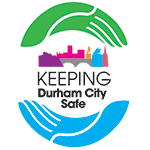Water safety - how to stay safe
Water may look safe, but it can be dangerous. Learn to spot and keep away from dangers. You may swim well in a warm indoor pool, but that does not mean that you will be able to swim in cold water outside.
Spot the dangers
The dangers of water include:
- it is very cold
- there may be hidden currents
- it can be difficult to get out (steep slimy banks)
- it can be deep
- there may be hidden rubbish e.g. shopping trolleys, broken glass
- there are no lifeguards
- it is difficult to estimate depth
- it may be polluted and may make you ill
Open water safety tips
- Be aware of your surroundings and take notice of any warning signs when out and about
- When running or walking next to open water, stay well clear of bank edges. They are often unstable and this can lead to slips, trips and falls
- Try to always walk or run with a friend
- Always let someone know where you're going - take your mobile phone
- Learn swimming and lifesaving skills
- Never enter the water if you have consumed alcohol
The conditions at open water sites change constantly:
- Always look for warning and guidance signs
- Swim parallel with the shore, not away from it
- Avoid drifting in the currents
- Do not enter fast flowing water
- Be aware of underwater hazards
- Get out of the water as soon as you start to feel cold
- Only enter the water in areas with adequate supervision and rescue cover
- Always wear a buoyancy aid or life jacket for activities on the water or at the water's edge (such as when boating or fishing)
- Always take someone with you when you go into or near water. If something goes wrong they will be able to get help
- If someone is in difficulty in the water shout reassurance to them and shout for help and call the emergency services (call 999 or 112)
- Without endangering yourself see if you can reach out to them with a stick, pole or item of clothing - lie down to ensure you stay secure. Alternatively throw something buoyant to them such as a ring, buoy or anything that will float
Take safety advice
Special flags and notices may warn you of danger. Know what the signs mean and do what they tell you.
You can view information published by the Royal Society for the Prevention of Accidents on water safety signs (RoSPA: Water safety signs) and the flags (RoSPA: Beach flags) you will see on the beach.
Go together
Children should always go with an adult, not by themselves.
An adult can point out dangers or help if somebody gets into trouble.
Our key swimming and water safety advice is:
- Ensure that you and your family can swim, be water confident, and have water safety skills
- Make smart choices; such as swimming at lifeguarded beaches and pools; use appropriate safety equipment and do not drink alcohol before going in the water
- Become aware of, and know how to avoid, key water safety hazards; such as rips, cold water and moving water whilst outside
- Know what to do in an emergency
Although these cannot provide an absolute 'drown-proof' level of protection, they will greatly affect your survival chances, and equip children with a positive lifelong skill.
Did you know that those that walk or run near water are at potential risk, as this group accounts for the largest proportion of UK drownings?

In partnership with
- Keeping Durham City safe
- Email help@durham.gov.uk
- Telephone 03000 26 0000

 Share this page on Facebook
Share this page on Facebook
 Share this page on Twitter
Share this page on Twitter
 Print this page
Print this page





